“This post contains affiliate links, and I will be compensated if you make a purchase after clicking on my links.”
There was a time, not too long ago, that pet owners would just use any old bowl to feed their dogs, regardless of the dog’s size, shape, eating style, and breed. But, in recent years, it’s been discovered that different dogs have different needs when it comes to mealtimes. And, using the wrong bowl can actually have some serious consequences!
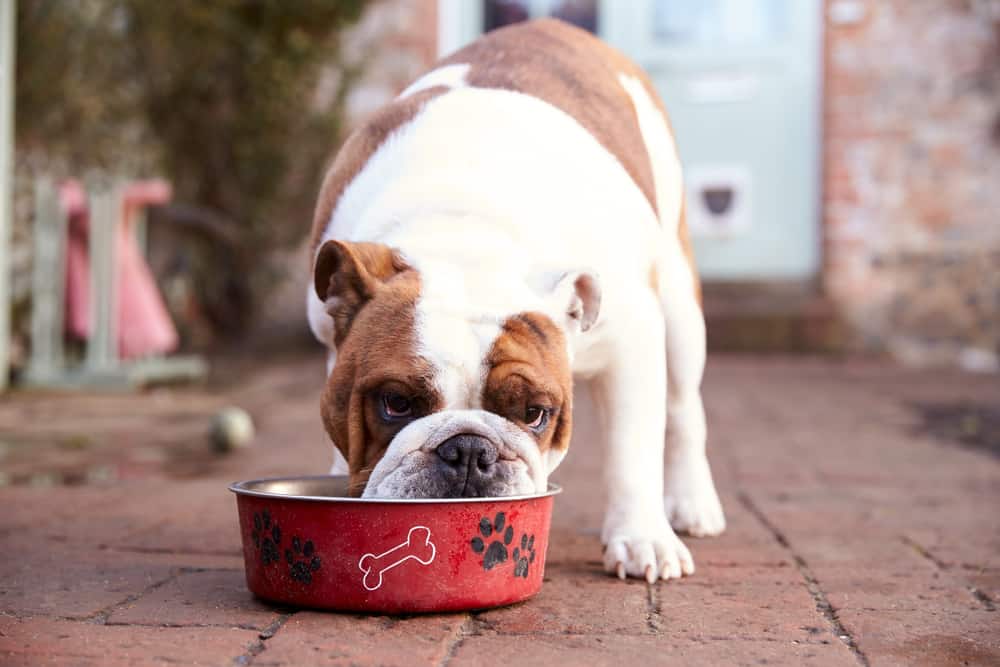
Luckily, there are a wide variety of dog food bowls available, each designed for a specific purpose. So, how do you know you’re using the right one?
When dog bowl shopping, you’ll need to take a few factors into consideration: How tall is your dog? Does he have long ears? A short nose? Does he eat too quickly? Does he have a deep chest in relation to his waist? These things all matter!
Shallow Bowls
Although these are the most commonly used type of bowl, they’re most appropriate for small to medium breed dogs, like Chihuahuas and Pomeranians, or Beagles and Corgis, and puppies. Because these dishes are shallow, they allow for smaller dogs to comfortably reach all the way into the bowl without putting pressure on their sensitive throats.
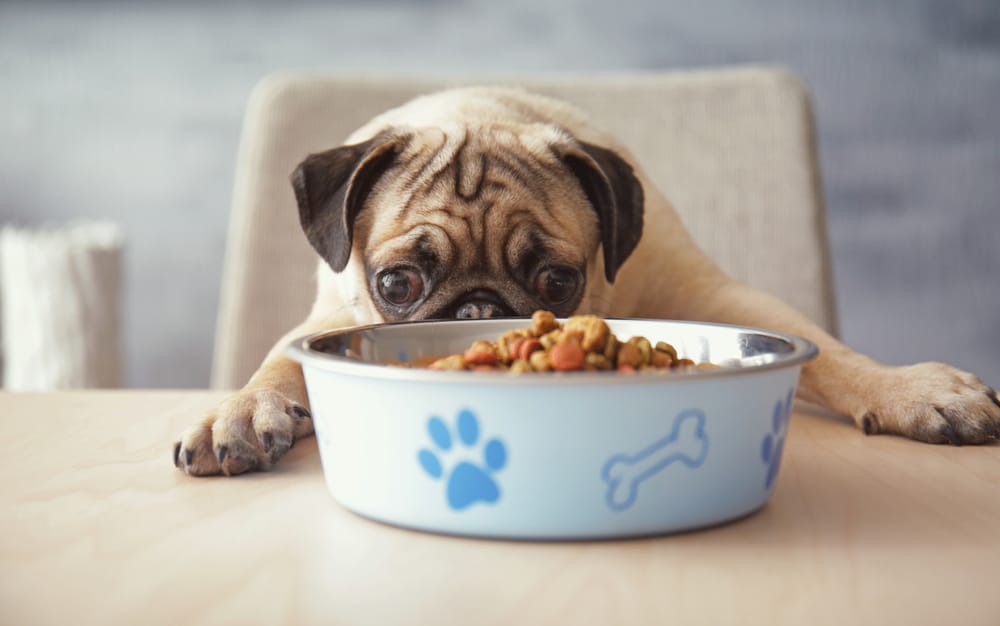
Deep Bowls
Deep bowls are most appropriate for dogs with long, thin snouts, like Dachshunds, Greyhounds, and Collies as they allow the dog to more comfortably access their food without chasing it around a shallow bowl.
Steep-Sided Bowls
These bowls are typically fairly deep, with a narrower opening at the top and sides that are angled inward. Steep-sided dog bowls are the best choice for long-eared dogs, like Beagles, Basset Hounds, and Cocker Spaniels who would otherwise end up dragging their ears through their food and water. The unique shape of these bowls allows the dog to eat comfortably while their ears are kept clean and dry.
Looking for a bowl for your long-eared dog? Check out the Buster Incredibowl, designed especially for dogs with long ears!
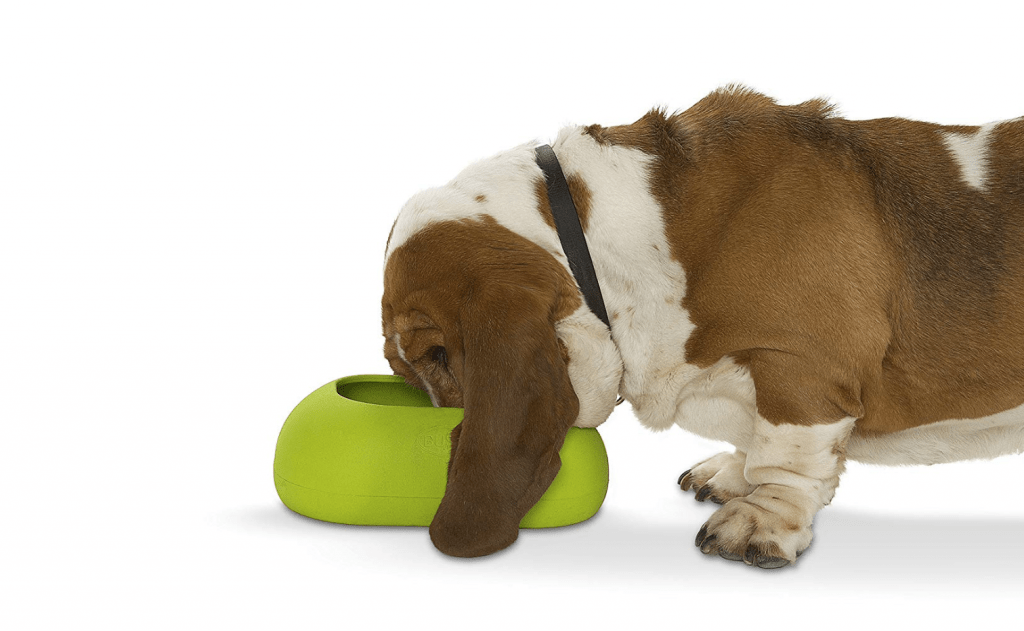
Elevated Bowls
Elevated dog bowls are an excellent choice for large breeds, like Labrador Retrievers and Huskies, and giant dog breeds, like Great Danes and Mastiffs. They’re also often recommended for senior dogs, dogs with certain physical limitations, following surgery, or with arthritis or joint pain. Available in a wide range of heights and sizes, these bowls are designed to allow larger dogs to eat comfortably, without putting unnecessary strain on joints as the dog bends to eat and drink. However, some controversy exists as to whether these are a good choice for dogs that are prone to a life-threatening condition known as Bloat. Dogs with a large chest-to-waist ratio, like Boxers and German Shepherds, should consult their veterinarian before using an elevated dish.
Buy Dog Bowls & Feeders Today – Shop over 1,000 Brands at Chewy!Slow-Feed Bowls
While slow-feed dog food bowls are not designed for a specific size or breed of dog, they’re an excellent option for any dog that has a tendency to eat too fast. Dogs that eat too fast typically eat more than those that take their time, making weight more difficult to manage. Eating too fast can also cause a dog to take in air which may lead to gas at best, and Bloat at worst. There are dozens of different types of slow-feed dog bowls available.
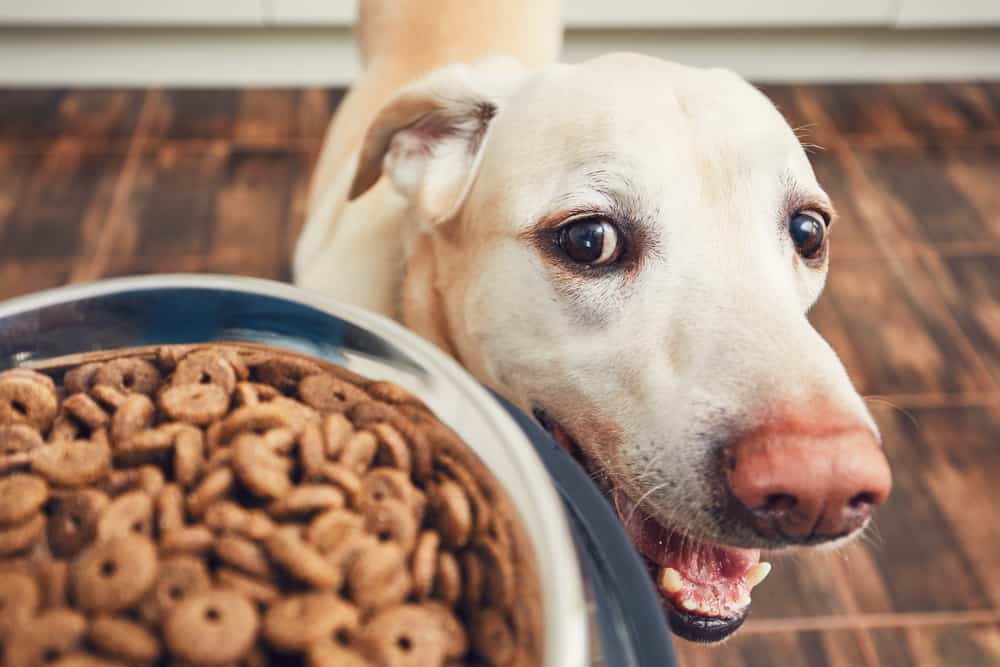
Now that you know which type of bowl your dog needs, you’ll need to determine which material that bowl should be made of!
Stainless steel bowls are a great choice for dog’s with sensitive skin, but should never be used outdoors as they can become very hot in the sun and frozen in the cold.
Ceramic bowls are often enjoyed by pet parents because they’re available in so many colors and designs and are heavy enough to prevent “bowl-pushers” from sliding them around the home. But, because ceramic bowls are porous, they should be washed immediately after every meal and should never be used when feeding a raw diet.
Plastic or silicone dog bowls are inexpensive, lightweight, and easy to clean, but have been known to cause irritation to dogs with sensitive skin.
And finally, eco-conscious dog parents may consider bowls made of bamboo.
Found this guide helpful? Pin it!
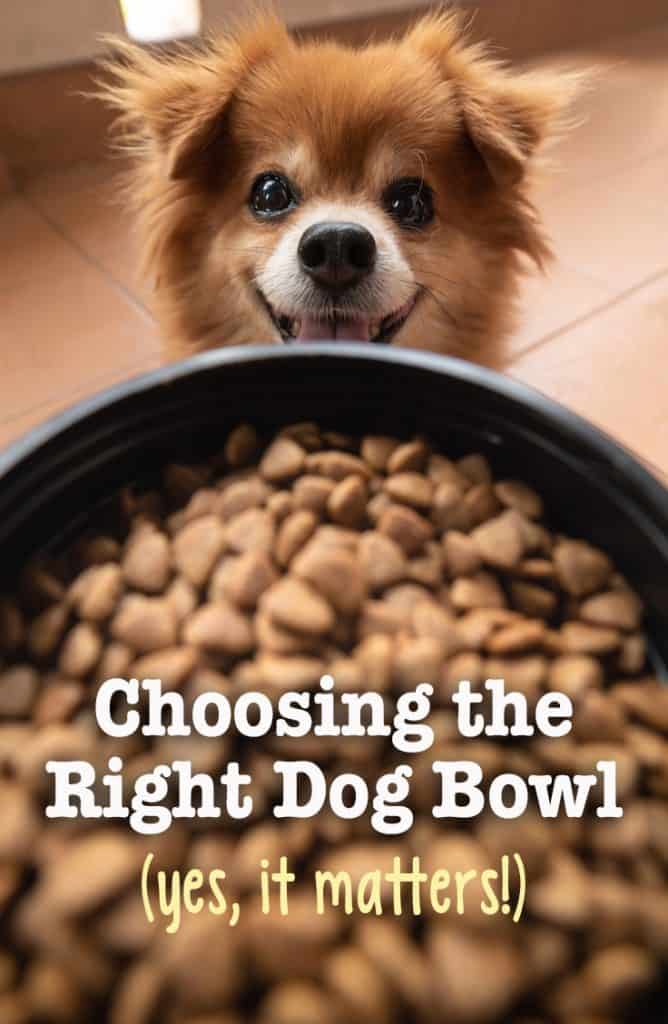

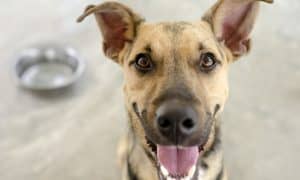

















Iris
Dec 10, 2019 at 10:46 am
It should be noted that some dogs may actually be allergic to the nickel found in stainless steel so to say it’s perfect for dogs with sensitive skin is not correct. The best option for dogs with sensitive skin is a ceramic bowl. And to say to not use ceramic because it is porous is not an argument because any ceramic designed for eating or drinking is glazed which in turn means it’s not porous.
Furthermore, plastic bowls cause skin irritation because plastic attracts bacteria like a magnet, so it’s actually one of the hardest bowls to keep clean.
It’s great you’re trying to make people aware of their bowl choices, but maybe next time find a better source to get your information from.
Ana @ HappyJackRussell
Jun 4, 2019 at 5:34 am
Excellent tips
Whichever type and material of dog bowl you decide to use get one that has anti-slip bottom or put them on a anti-slip floor pad so your hungry buddy doesn’t drive it around the whole apartment.